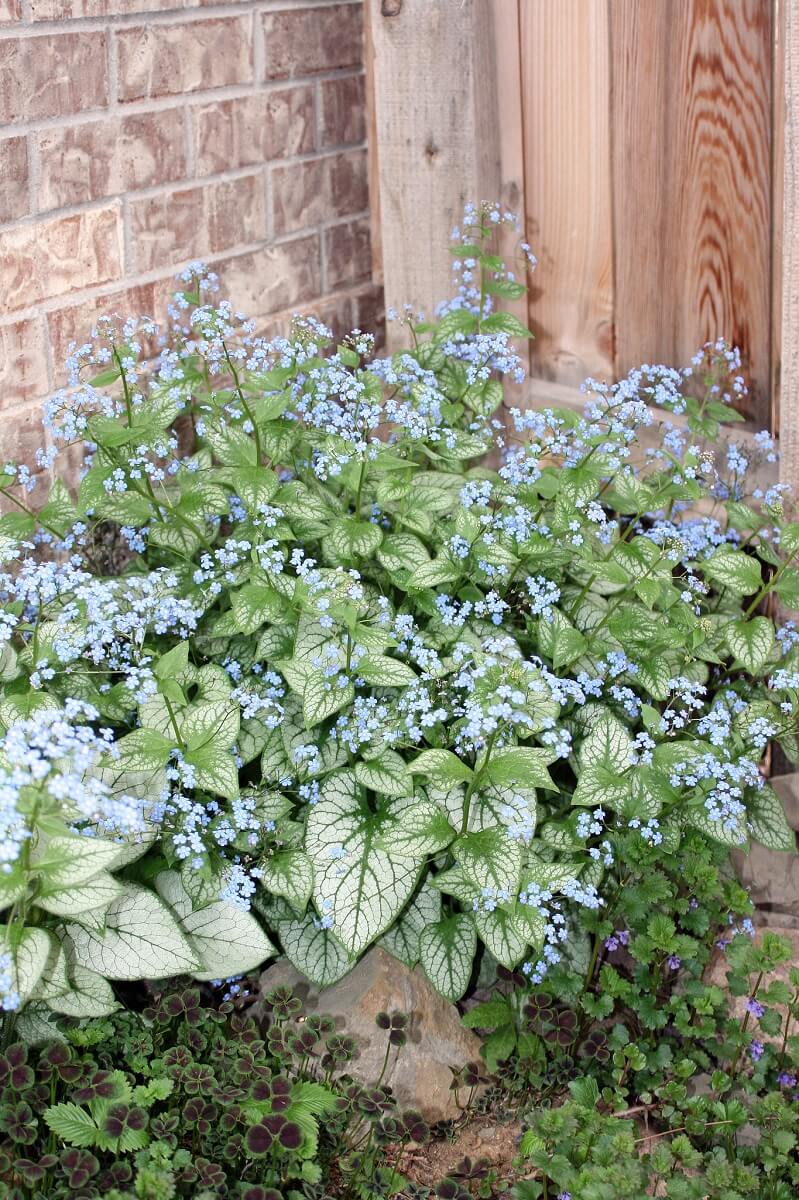I love my hostas — large-leafed with many varieties of color (mostly green) combinations. Tall stems covered in tiny flowers; it’s a great ground cover. The only problem with hostas is the deer love them too. To say they eat them is an understatement.
They devour them! Just as the plants are ready to shoot up flowered stems. I have to time it right, but if I cover the hostas with deer mesh, I can eliminate the gross decapitation. Even that offers minimal protection, and it destroys the ambiance of the plant itself.
This sad situation had me looking for a deer-resistant alternative. One that would spread out with similar, variegated broad leaves. I think I may have found it. And it has a name that is a big as the plant promises to be: Alexander’s Great Siberian bugloss (Brunnera macrophylla). The name, bugloss, comes from the Greek word which means ox tongue — probably due to the shape and roughness of the leaves.
Like hostas, it’s a great partial shade plant, but it’s both deer resistant and (bonus) rabbit resistant. However, as I quickly discovered with my first planting of bugloss, the plant is not immune to squirrels and chipmunks. The rhizomes attract small animals. They dug them up and devoured them with relish.

Solution? I’ve learned a few things that work for my many bulbs: plastic forks (prongs upward) around the planting and a thick layer of eggshells over the surface. Both detract annoying pests as they don’t appreciate poking their delicate paws.
Related Post: The Hosta Plant
So, my second planting of bugloss has produced the promised large, heart-shaped, dark green leaves, and the tiny blue flowers that look a lot like forget-me-nots (another one of my favorite spring flowers) that balance themselves on slender, 18-inch stems. The flowers appeared in the spring, but the leaves provided an attractive ground cover all through the summer.
Even with our long dry summer months, the bugloss continued to show off its leafy beauty well into the fall. After enjoying my first spring with bugloss flowers, I was intrigued to discover this plant was also known as false forget-me-nots.
Bugloss Growing Conditions
A good shade plant, bugloss also does well in partly sunny areas, but too much sun will wilt and burn the leaves. It tolerates drought and just about any type of soil, but it prefers a consistently moist, organically rich soil.
The plant will multiply through the spread of its creeping rhizomes. It self-seeds when the growing conditions are at its best (in other words, during a cool, wet summer) so be prepared for a large patch of bugloss. And, surprisingly, given it’s such a large plant, it does well in containers.

As for its uses? It is an herbaceous perennial and as such, one might expect some medicinal or culinary uses for this plant. Some of the bugloss varieties do have their medicinal and culinary uses. For example, the viper’s bugloss, Echium vulgare, is apparently a good preventative and remedy for viper and other snake bites.
Viper’s bugloss, related to Borago officinalis, is similarly used for sweat-inducing and diuretic effects, though more recently, it hasn’t been considered a viable source since it has the potential of being toxic. There’s actually quite a list of medicinal uses for this type of bugloss. And the leaves, when young, may be eaten raw or cooked, much like spinach.
Related Post: How To Grow Victory Gardens
However, my bugloss, Alexander’s Great Siberian bugloss, is purely ornamental. There are no known medicinal or culinary uses for any part of this plant. It is ground cover, and an attractive addition to a large, shady garden space. A wonderful showpiece, my bugloss is deer, rabbit, and pest resistant (other than freshly planted rhizomes which may attract squirrels and chipmunks). And, it self-seeds and multiplies through its rhizomes. Bugloss makes a smashing display in a shady spot of the garden.










































Leave a Reply